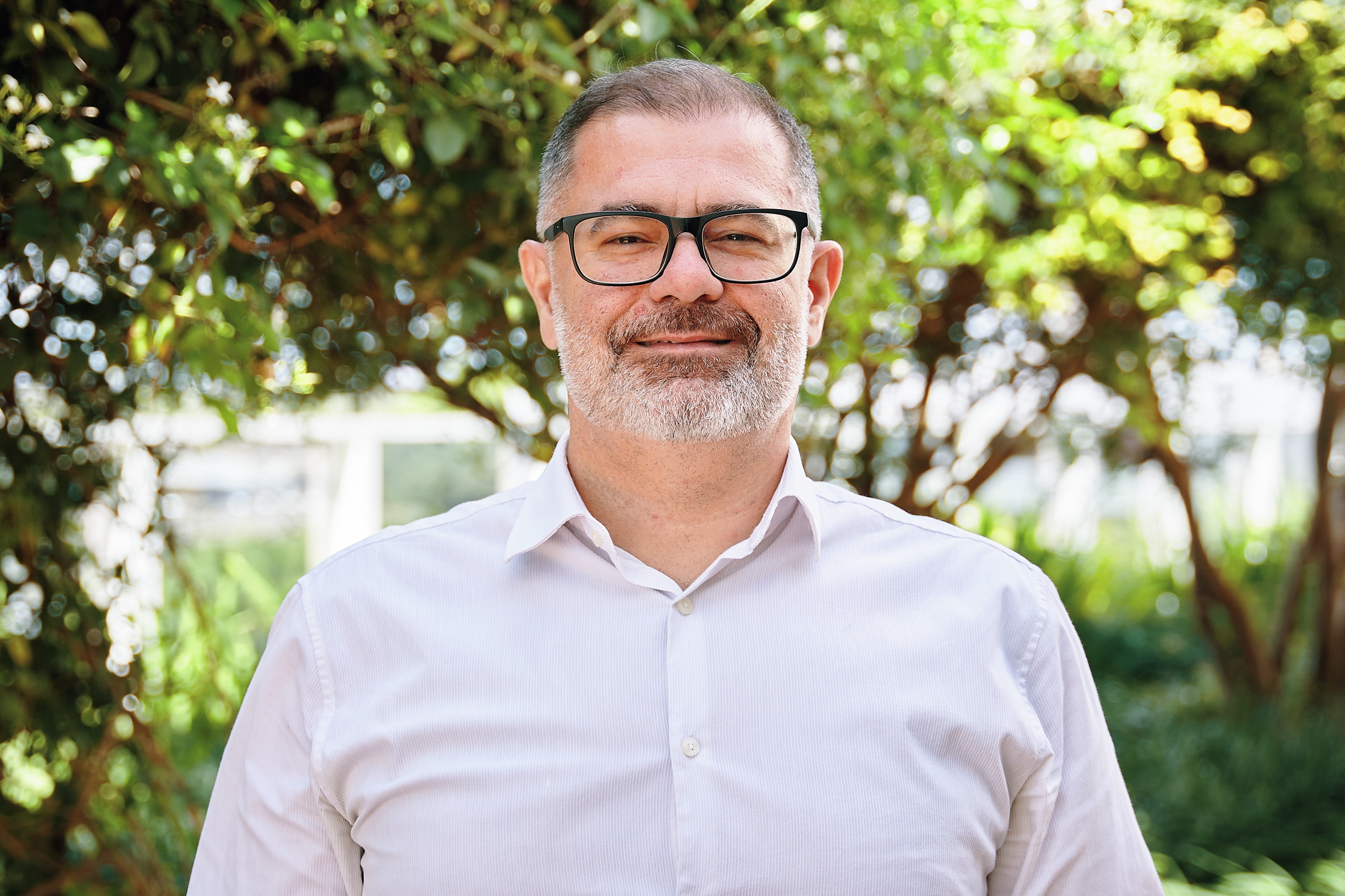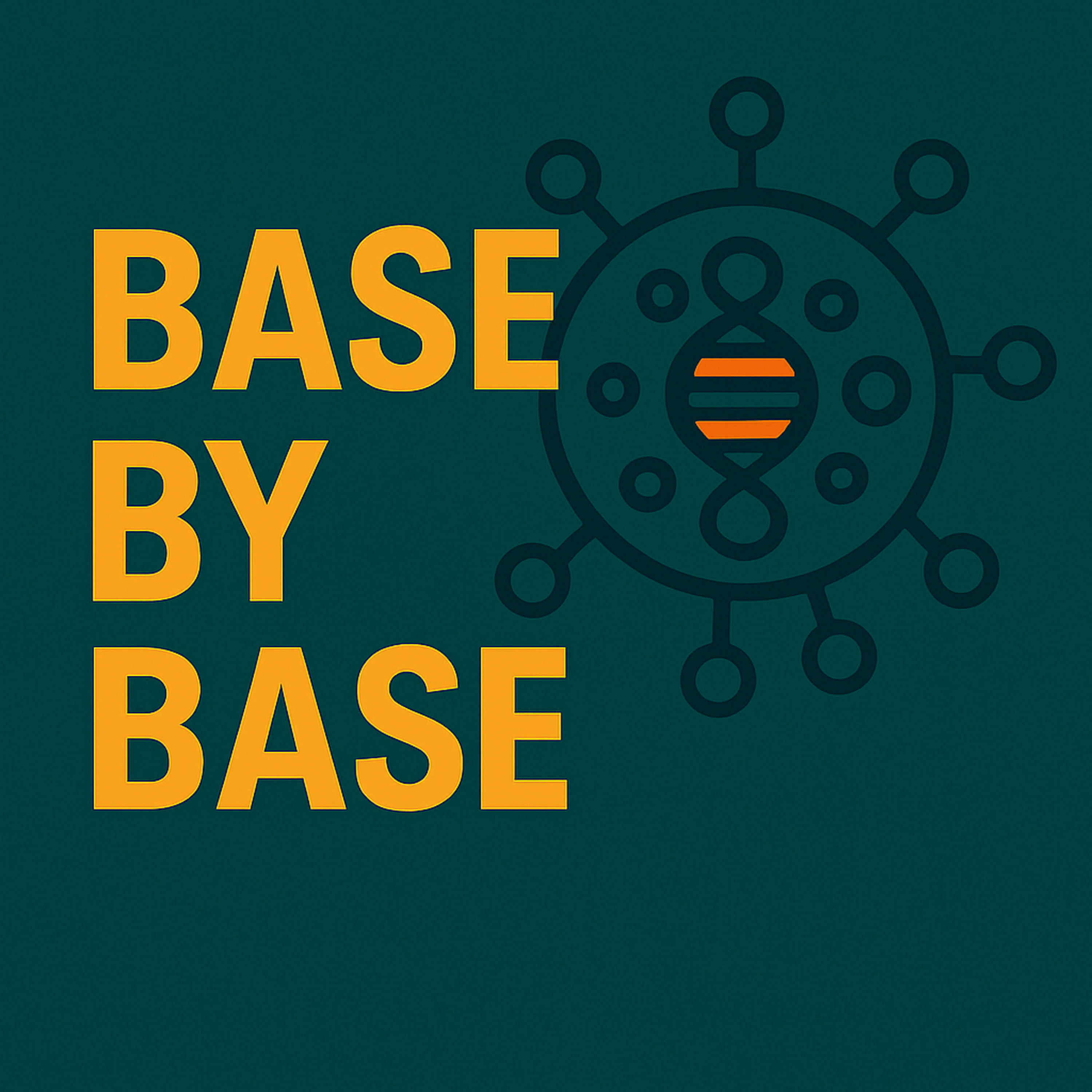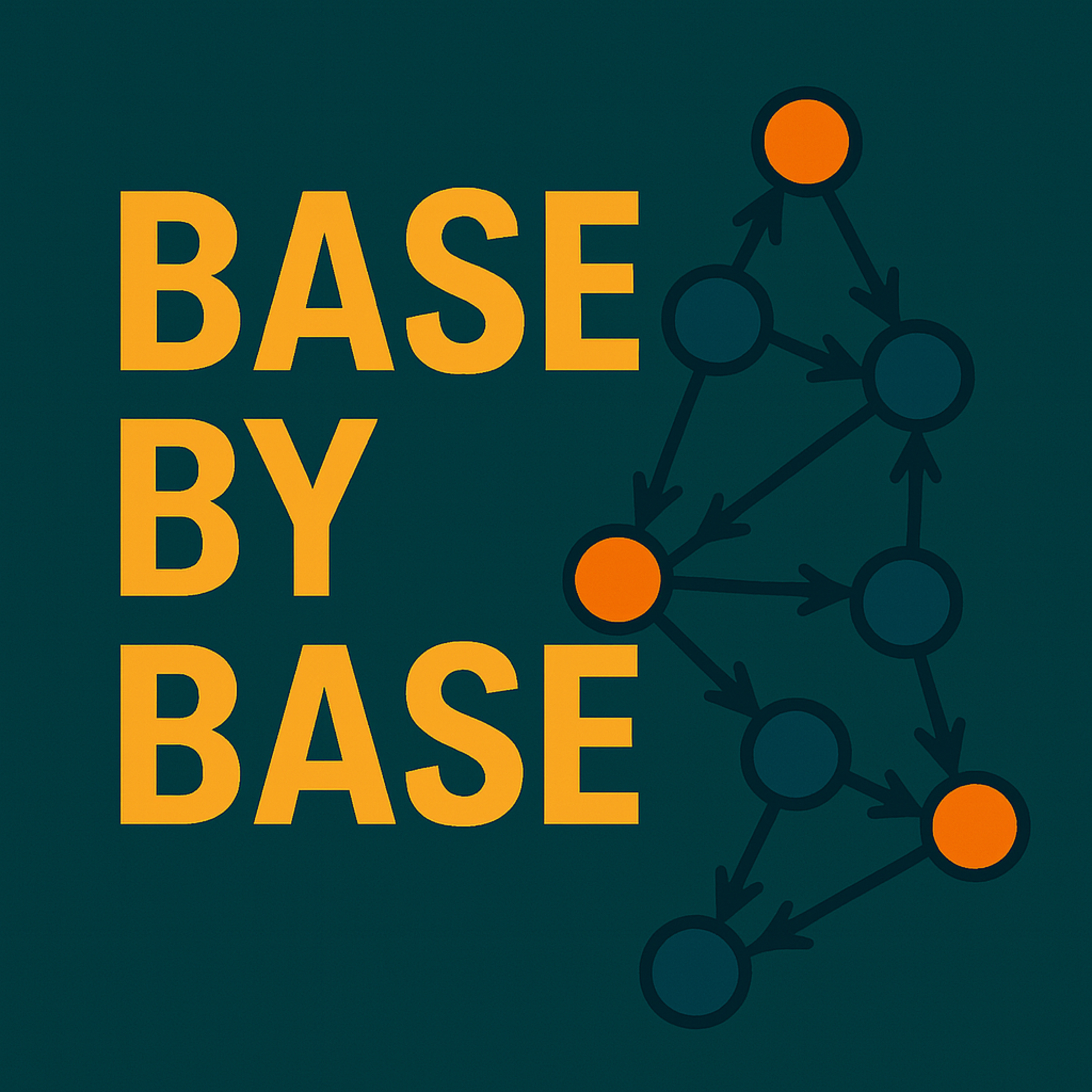Episode Transcript
[00:00:14] Speaker A: Welcome to Bass by Bass, the papercast that brings genomics to you wherever you are. Have you ever stopped to consider the intricate dance happening inside a single cell? Especially, you know, when it comes to cancer? Imagine designing a highly precise treatment, A molecular smart bomb aimed at a specific weakness in cancer cells. Sounds perfect, right? But what if hitting that one target inadvertently creates an environment where other, maybe even more aggressive mutations, ones that were held in check, quietly spring to life and take over? Or what if the therapy that offers immediate, undeniable relief. What if, over time, it actually paves the way for a much more challenging form of the disease? It's a profound question, Almost a biological paradox.
[00:00:54] Speaker B: It truly is. Yeah, we often think of targeted therapies as these, like silver bullets. But cancer biology is rarely that simple. It's.
It's a dynamic adaptive system. Disrupting one pathway can sometimes, well, unwittingly empower another. Today, we're diving deep into a recent pretty groundbreaking paper that uncovers precisely this surprising phenomenon within blood cancers. This research reveals how a widely used and genuinely effective therapy can lead to the selective growth of a different set of dangerous mutations. Mutations ultimately impacting patient outcomes in ways we're only just starting to fully grasp.
[00:01:29] Speaker A: Okay, but before we unpack this incredible story, we definitely want to give a special shout out to the brilliant minds behind this research. Today, we celebrate the collaborative work of a large international team. We're talking about folks from esteemed institutions like universitre, Parisite, inserm and the Dana farber cancer institute. Their meticulous and innovative research has really pushed our understanding forward. Showing us the complex, you know, the evolving nature of cancer treatment.
[00:01:55] Speaker B: Absolutely. So let's set the stage a bit for a deep dive. We're focusing on a group of blood cancers called myeloproliferative neoplasms, or MPNs. Basically, these are conditions where your bone marrow, the factory for blood cells, starts producing way too many of them. And that leads to a whole host of problems. For many years, managing MPNs was mostly about treating symptoms. But then, about a decade ago, a real revolution happened with a new class of targeted drugs. JEK inhibitors. Ruxolitinib was the trailblazer there.
[00:02:23] Speaker A: Right, Ruxolitinib. And these Janek inhibitors were a monumental sh, weren't they? They specifically target the Jake stat signaling pathway. That's the pathway that's often stuck in overdrive in MPNs because of common mutations like in JoCO2, CLR or MPL genes. And the impact on patients was dramatic. I mean, immediate. Many saw huge Improvements in quality of life, less fatigue, night sweats, itching. And those enlarged spleens started shrinking. It was a real lifeline.
[00:02:49] Speaker B: Absolutely. The symptomatic relief was undeniable, truly life changing for so many.
However, that long term question kind of could ruxolitinib actually modify the disease course itself? Could it prevent progression or maybe even extend overall patient survival? That became a subject of intense ongoing debate. Because, you see, cancer cells are remarkably adaptable. We've certainly seen resistance mechanisms pop up with other targeted therapies. Sometimes, yeah, it's new mutations in the targeted protein itself, making the drug useless.
But often it's something maybe more insidious.
The selection of pre existing non targeted subclones. These are small groups of cancer cells with different mutations sort of lurking in the background. They suddenly gain this huge survival advantage when the main cancer clone is suppressed by the treatment. We've seen this, for instance, with FLT3 inhibitors and AML, where resistance often involves rasmibact activating mutations being selected.
[00:03:42] Speaker A: So the central really compelling question this new research tackled was, could this precise targeted pressure from JACR inhibitors actually be reshaping the cancer landscape within patients, Possibly even in an unfavorable way over the long run, Were we, in trying to provide relief, inadvertently opening a door for something worse?
[00:04:02] Speaker B: Exactly. And to tackle this really complex question, the researchers launched a truly comprehensive, multifaceted study. They left no stone unturned, really. First, they started with a large group of 143 myelofibrosis patients. Myelofibrosis is a specific, often more aggressive subtype of mpn. And what was absolutely critical here was that many of these patients had longitudinal molecular data.
[00:04:25] Speaker A: Ah, longitudinal data. Okay, so that's just a way of saying they tracked the genetic changes over time in the same patient. Right. Not just comparing different patients. That must be incredibly valuable.
[00:04:34] Speaker B: Precisely. It's like having a detailed movie of the cancer's genetic evolution, not just snapshots. This let them meticulously compare how the cancer's genetic makeup changed in patients treated with ruxolitinib versus those who weren't.
To do this, they used next generation sequencing, or NGS, a powerful tool allowing them to detect mutations across 36 key myeloid genes.
It wasn't just about finding any mutation. It was about pinpointing those specific genetic alterations relevant to blood cancers and tracking how their prevalence, how common, they became, shifted under treatment pressure.
[00:05:10] Speaker A: Okay, but the researchers knew that just looking at patient data, even longitudinal data wouldn't tell the full story of how these changes Were really happening at the cellular level.
To get to the nitty gritty, they had to push further into the actual mechanisms, didn't they?
[00:05:23] Speaker B: They absolutely did. So to map out the intricate clonal architecture, which is basically figuring out the diverse populations of cancer cells and their sort of family trees within a patient sample, they brought in single cell DNA sequencing. This technique is incredibly powerful. It lets you analyze the DNA of individual cells, not just a mixed up sample so you can see which mutations coexist in the same cell and how different clones compete.
Then they brought patient samples into the lab for ex vivo experiments. They treated primary patient cells with ruxolitinib directly right there in a controlled environment to watch the immediate cellular responses, and.
[00:06:00] Speaker A: Then to really confirm their findings and establish causation. You know, proving that rucuxolitinib causes the selection, not just that it happens at the same time. They move to sophisticated in vitro and in vivo competition assays.
[00:06:11] Speaker B: Right. The in vitro is like in the test tube, and in vivo means in a living organism, like a mouse model.
These assays allowed them to directly watch how different cell lines, some with ras mutations, some without, competed when they were exposed to the drug, Both in the controlled lab setting and within a living system. The in vivo models are super important because they mimic the complex environment of a body, which you just can't always replicate in a dish. They even did experiments where they specifically knocked down the JAK2 gene, essentially silencing it to isolate its direct impact separate from the drug itself.
[00:06:46] Speaker A: Okay, wow, that's a lot of different angles.
[00:06:49] Speaker B: Yeah. And finally, to see if these patterns held up more broadly beyond just their immediate patient group, they cross referenced their findings with a large public data set of acute myeloid leukemia patients called beat aml. This whole multi pronged approach, moving from large patient cohorts down to single cells, then into mechanistic lab work, and finally validating externally really strengthens the robustness and, you know, the generalizability of their conclusions. It's a fantastic example of comprehensive translational research.
[00:07:16] Speaker A: Okay, okay. The detective work has been laid out brilliantly. So now the big reveal.
What did all this actually show? What was the discovery that really shifts our understanding here?
[00:07:26] Speaker B: Well, the first really striking finding was this clear, consistent link. In their patient group, recolitinib treatment was significantly associated with the accumulation and increased presence of mutations in the ras pathway. We're talking genes like nras, kras, cpl, common players in cancer. In patients treated with ruxolitinib, a significant 28% of newly detected mutations involved this Ras pathway. Compare that to only 7% patients who weren't treated with ruxolitinib. That's a big difference. And furthermore, the variant allele frequency, the vaf, which basically tells you what percentage of cells carry that mutation. The VAF also significantly increased, but only in the rexolitinib treated patients.
[00:08:03] Speaker A: Wow. Okay. So it's not just that these Ras mutations were appearing, but they were actually growing in prominence, becoming a much larger fraction of the cancer cells. Specifically, when patients were on ruxolitinib. It really does sound like was clearing out the competition, letting these Ras mutated cells just take over. But what does that actually mean for the patient's prognosis? Does it matter?
[00:08:24] Speaker B: In the end, this is where it gets critically important for patient care. The study found that these Ras mutations negatively impacted patient prognosis only when they were in the context of ruxolitinib treatment. That's a crucial distinction. Patients on ruxolitinib with Ras mutations showed significantly decreased overall survival and and also decreased transformation free survival.
[00:08:45] Speaker A: Transformation free survival, Meaning?
[00:08:47] Speaker B: Meaning a much higher risk of their MPN changing, transforming into a more aggressive, often fatal form of leukemia, Specifically MDS or aml. To put some numbers on it, the median overall survival for ruxolitinib treated patients without Ras mutations was a pretty robust 18.5 years. But it plummeted to just 7.6 years when the Ras mutation was present.
[00:09:07] Speaker A: Wow. Less than half.
[00:09:08] Speaker B: Yeah. And this grim pattern held even for patients who already had a high risk prognosis score based on other factors.
Among those Ras mutated patients, a staggering 47% treated with ruxolitinib transformed to AMDs, compared to only 17% of non treated patients with Ras mutations. It wasn't just a small effect, it was a devastating impact.
[00:09:29] Speaker A: That's truly staggering and deeply concerning. So the drug, while giving that immediate needed benefit, might be inadvertently creating conditions that actively worsen the long term outlook for some patients, leading to a more aggressive disease down the line. How on earth does that happen at the cellular level? What's the actual biological mechanism here?
[00:09:46] Speaker B: Right. This leads us straight to the heart of their mechanistic discoveries. And it's where the paper delivers a really profound insight.
Through their single cell work in the ex vivo experiments, they show definitively that ruxolitanub actively selects for these Ras mutant clones. Imagine it like a cellular battlefield. When ruxolitinib knocks down the main JK2 driven cells, the Ras mutated cells suddenly get this significant fitness advantage. They get better at forming colonies under ruxolitinib exposure, they effectively outcompete not just the healthy cells, but even the original cancer cells driven by the JK2 pathway. And this happened whether the RES mutation was already sort of embedded within the main Jake's dad activated clone, or if it was lurking in a separate non driver subclone, just waiting for its chance.
[00:10:31] Speaker A: It really is like the drug clears the stage and these other perhaps more aggressive mutations that were in the shadows seem suddenly step into the spotlight and just flourish. An unintended consequence. A kind of blind spot in our targeted attack.
[00:10:43] Speaker B: Precisely. And they found this was critically dependent on the MEK pathway, which as you probably know, is directly activated by RAS mutations. When they specifically inhibited that MPK pathway, the resistance to ruxolitinib was partially reversed. That confirmed the central role of Ras MEPK here. But here's the really counterintuitive bit, the sort of Goldilocks effect, if you will.
They showed that activating the NPK pathway actually led to a downregulation of JAK2 activity.
[00:11:10] Speaker A: Wait, hold on. So inhibiting JAK2 with the drug reduces JK2 activity, obviously, but that somehow helps the RAS pathway by making it more active or letting it thrive. That sounds incredibly counterintuitive. How does reducing one cancer driver unleash another?
[00:11:25] Speaker B: It does sound paradoxical, and it highlights this fascinating biological balancing act. Their experiments show the JK2 impairment, whether from the drug or from directly knocking down the gene. And it released these Ras mutated cells from something called oncogene induced senescence.
[00:11:39] Speaker A: Oncogene induced senescence, like a safety break?
[00:11:42] Speaker B: Exactly. Imagine a cell as a car with a built in speed limiter. When an oncogene, a cancer driving gene like ras, becomes too active, the cell naturally hits this braixinescence to stop it from going totally out of control.
It's a fundamental way the body tries to contain cancer early on. But by hitting JK2, they inadvertently disengage that safety brakes specifically for the Ras mutated cells. This allowed those cells which were previously held in check by having maybe too much oncogene activity for their own good, to suddenly proliferate more aggressively. It led to increased cell cycling, runaway growth. It's almost as if inhibiting the first oncogenic pathway provided the just right environment that Goldilocks level of activity for the other oncogene RAs to truly unleash its full unchecked potential.
And they further confirmed this wasn't just a ruxolitnev's specific Quirk. By showing similar resistance patterns to other JK2 inhibitors like momolitinib and vedratinib in that beat AML patient data, it argues for an on target class effect across JAKE inhibitors.
[00:12:41] Speaker A: That's a profound shift in understanding. Okay, so what does this all mean for patients, for clinicians, and maybe more broadly for how we approach targeted cancer therapies?
[00:12:52] Speaker B: Well, this deep dive delivers a powerful, though complex message. It strongly suggests that while JAK2 inhibition is incredibly beneficial for immediate symptom management in MPN patients, it can inadvertently create this strong selective pressure.
This pressure selects for and significantly enhances the oncogenic potential of pre existing RAS pathway mutations.
And as we discussed, this isn't just simple resistance in the old sense. It feels more like a sophisticated, almost paradoxical cooperation between two different oncogenic pathways. Dampening one actually unleashes the other's full power. It really reflects what some researchers call the Goldilocks principle of oncogene pathways. There's a specific optimal amount of activity needed for cancer to really take off, and sometimes too much can actually trigger those cellular breaks. Right.
[00:13:38] Speaker A: This raises a critical and immediate question then for clinicians and patients.
What should they be doing with this knowledge right now? How does this potentially change the practical approach to treating mpn?
[00:13:50] Speaker B: Given these pretty stark findings, the study really prompts several critical recommendations for how we manage MPN patients going forward.
First, and perhaps most importantly, screening for pre existing RAS mutations in MPN patients before starting JK inhibitor treat seems paramount.
[00:14:08] Speaker A: So know what you're dealing with from the start.
[00:14:10] Speaker B: Exactly. Have a more complete molecular map of that patient's cancer from day one. Knowing if these mutations are already present could significantly inform therapeutic decisions. Second, consistent regular molecular follow up during treatment could be vital. We need to look for the early emergence of these RAS mutated clones. We're talking about periodically checking if these potentially more aggressive subclones are starting to appear, which might allow for proactive intervention before they really gain traction and start impacting prognosis.
[00:14:38] Speaker A: And if these mutations are detected either at the start or during treatment, what then? Are there options available now, or does this mostly point towards new drug development needs?
[00:14:47] Speaker B: Well, this knowledge definitely opens crucial doors for more personalized treatment adjustments. We can now think about rationally designed combinatorial therapeutic strategies. This could mean perhaps combining JAK inhibitors with MEK pathway inhibitors in a calculated way, specifically for those patients who harbor RES mutations or develop them during treatment. These kinds of combination therapies are actually already being explored in clinical trials for other cancers. And these findings provide a really strong rationale for testing similar approaches in MPN.
[00:15:20] Speaker A: And this isn't just about MPNs, is it? Could this oncogene overdose idea or this paradoxical selection principle apply in other cancers or maybe even other diseases where targeted therapies are increasingly used?
[00:15:31] Speaker B: That's a truly crucial point. And the authors themselves really highlight the potential broader relevance.
This mechanism might well be at play in other tumors where RAS pathway mutations are common. Think pancreatic cancer, skin cancer, lung cancer. Places where combination therapies are also being actively investigated.
It might even extend to some benign disorders where JAKE inhibitors are used, raising questions about potential long term risks there too. For example, ruxolitinib has been linked in some studies to an increased incidence of aggressive non melanoma skin cancers. This paper potentially offers a mechanistic explanation for why that might be happening. It just underscores the profound challenge of targeting diseases as heterogeneous and incredibly adaptive as cancer. It's such a dynamic system. We really need to be thinking several steps ahead.
[00:16:17] Speaker A: Absolutely. Though of course it's vital we reiterate that JAK inhibitors remain a truly vital, transformative part of the therapeutic arsenal. They offer significant immediate benefits for many, many patients. This research isn't a call to just abandon these crucial drugs. Right. It's more about refining our approach, making treatments smarter, more precise, more predictive.
[00:16:40] Speaker B: Exactly right. And the paper itself transparently acknowledges its limitations. The retrospective nature of the patient cohort, the relatively low number of Res mutations, and some analyses. These clinical findings really need further confirmation in larger independent studies. But without a doubt, it provides a powerful new perspective that demands attention and definitely warrants further investigation.
[00:17:00] Speaker A: So wrapping this up, this deep dive reveals that while JAKE inhibitors are powerful tools against mpn, they can inadvertently create a selective pressure. This pressure allows pre existing Res mutations to flourish and potentially drive more aggressive disease later on. And it's not just about simple resistance. It's about this fascinating, almost paradoxical interplay where inhibiting one pathway somehow unlocks the full oncogenic potential of another.
It really underscores the dynamic adaptive nature of cancer cells.
[00:17:30] Speaker B: So the final thought maybe is what does this mean for how we approach targeted cancer therapies more broadly? And could this oncogene overdose or paradoxical selection principle be at play in other diseases or biological systems that you encounter in your own work or reading?
[00:17:44] Speaker A: This episode was based on an Open Access article under the CCBY 4.0 license. You can find a direct link to the paper and the license in our episode description.
If you enjoyed this analysis, the best way to support Bass by Bass is to subscribe or follow in your favorite podcast app and leave us a five star rating. It only takes a few seconds, but makes a huge difference in helping others discover the show. Thanks for listening and join us next time as we explore more science. Bass by Bass.




